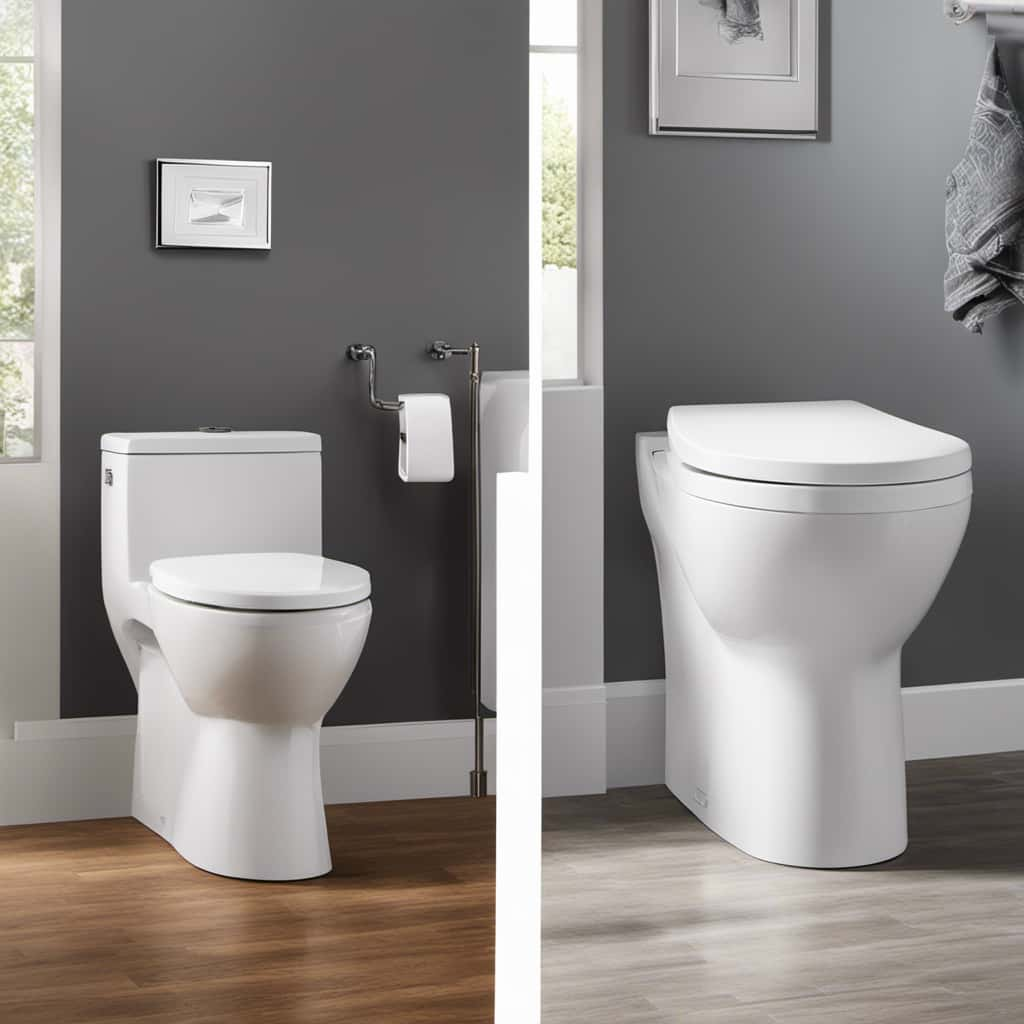We know what you’re thinking – a clogged and overflowing toilet can be a nightmare. But fear not, because we’re here to help. In this step-by-step guide, we’ll show you exactly what to do when faced with this unpleasant situation.
From shutting off the water supply to using a plunger or a toilet auger, we’ve got you covered.
So, let’s dive in and master the art of unclogging a toilet!
Key Takeaways
- Shut off the water supply valve and lift the flapper to stop water flow.
- Assess the severity of the clog by checking the water level in the toilet bowl.
- Use a plunger or toilet auger to dislodge the clog.
- Prevent future clogs by avoiding flushing excessive toilet paper or foreign objects and regularly maintaining the toilet.
Shut off the Water Supply
To avoid further damage and potential flooding, we need to immediately shut off the water supply to the toilet. Here’s a step-by-step guide on how to do it:

- Locate the water supply valve, which is usually located behind or beside the toilet. It’s usually a small metal or plastic lever.
- Turn the valve clockwise to shut off the water supply. This will stop the flow of water into the toilet tank.
- If the valve is difficult to turn or doesn’t fully shut off the water, you may need to use a pair of pliers or a wrench to tighten it further.
By shutting off the water supply, you prevent any additional water from entering the toilet bowl and exacerbating the clog. This is an essential first step in addressing a clogged and overflowing toilet.
Remember, regular maintenance and following best practices, such as using less toilet paper and avoiding flushing non-flushable items, can help prevent toilet clogs in the future.
Additionally, if you don’t have a plunger on hand, there are alternative methods to unclog a toilet, such as using a toilet brush or a mixture of hot water and dish soap.
Assess the Severity of the Clog
First, we need to determine the severity of the clog by assessing the water level in the toilet bowl. To do this, grab a plunger and gently push it down into the water to create a seal. Slowly pull the plunger up and observe the water level. If the water level rises quickly or overflows, the clog is severe and requires immediate action.
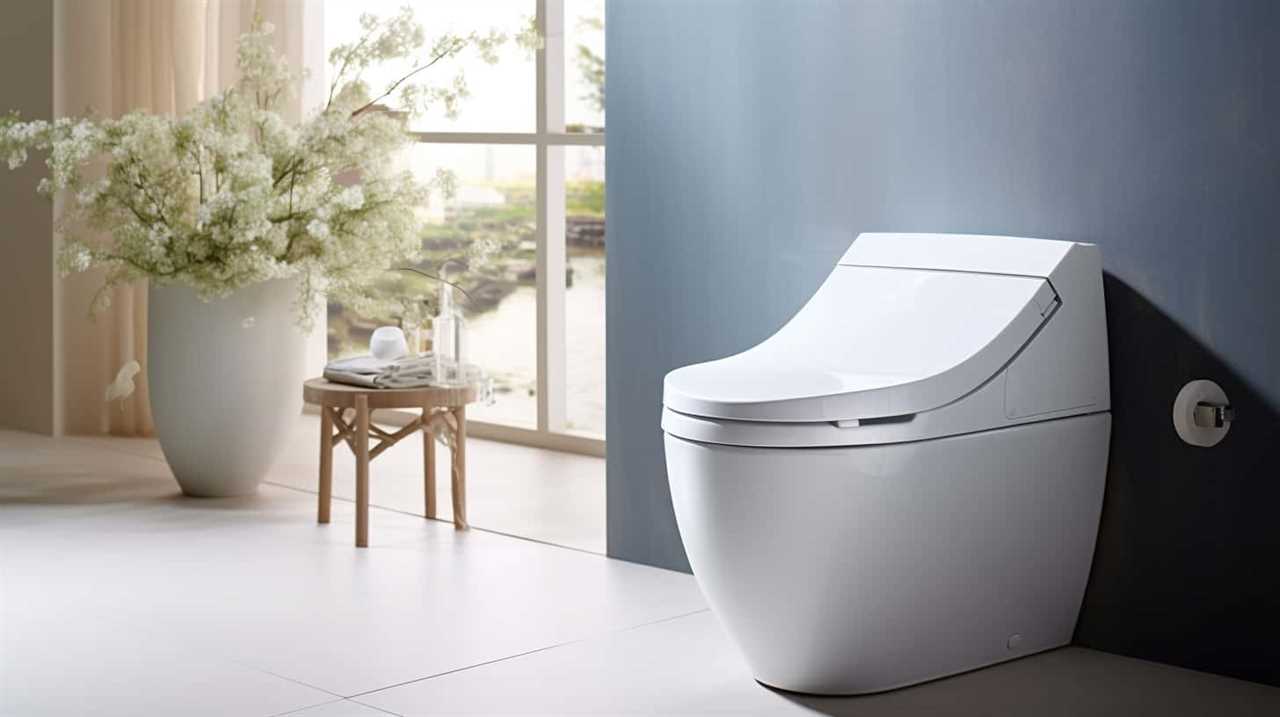
Common causes of toilet clogs include flushing excessive toilet paper, sanitary products, or foreign objects. To prevent future clogs, remember to only flush toilet paper and waste. Avoid flushing anything else, including wipes, cotton balls, or paper towels.
Additionally, regular maintenance, such as using a drain cleaner or septic-safe bacteria, can help keep your toilet clog-free.
Try Using a Plunger
Now let’s move on to using a plunger to tackle the clog in our toilet. When using a plunger, follow these steps for the best results:
- Position the plunger: Ensure that the plunger’s rubber cup fully covers the drain opening. It should create a tight seal around the hole.
- Apply pressure: Push the plunger down firmly, then pull up quickly. This action creates suction that can dislodge the clog. Repeat this plunging motion several times.
- Check for success: After several attempts, check if the water begins to drain. If it does, congratulations! If not, you may need to try alternative methods.
It’s important to avoid common mistakes when using a plunger. Make sure the plunger is fully submerged in water to create a good seal. Additionally, avoid using excessive force, as it may damage the toilet or cause water to splash out.
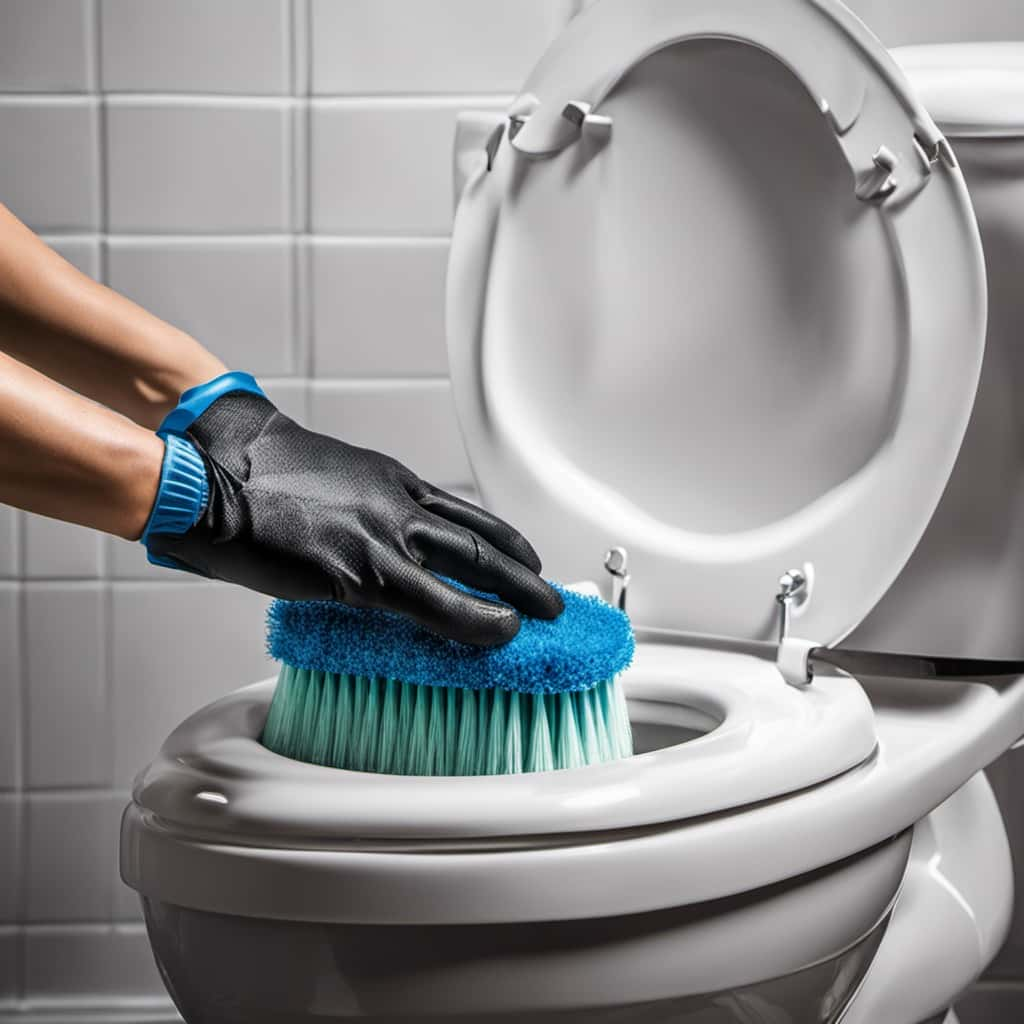
Use a Toilet Auger or Snake
When the plunger fails to unclog the toilet, we can turn to using a toilet auger or snake. A toilet auger, also known as a closet auger, is a tool specifically designed for clearing clogs in toilets. It consists of a long, flexible cable with a crank handle on one end and a corkscrew-like tip on the other. By inserting the auger into the toilet drain and turning the crank, we can effectively break up and remove the clog.
Toilet auger benefits include its ability to reach deep into the toilet drain and remove stubborn clogs that a plunger can’t handle. It’s also a more hygienic option, as it prevents the risk of water splashing back onto the user.
To use a toilet snake effectively, follow these steps:
- Put on rubber gloves and place a towel or newspaper around the toilet to catch any water spills.
- Insert the toilet auger into the toilet bowl, ensuring the corkscrew tip is facing downward.
- Slowly crank the handle clockwise to feed the cable into the drain.
- Once you feel resistance, continue cranking to break up the clog.
- Slowly retract the auger, taking care not to scratch the toilet bowl.
Remember to clean and disinfect the toilet auger after use.
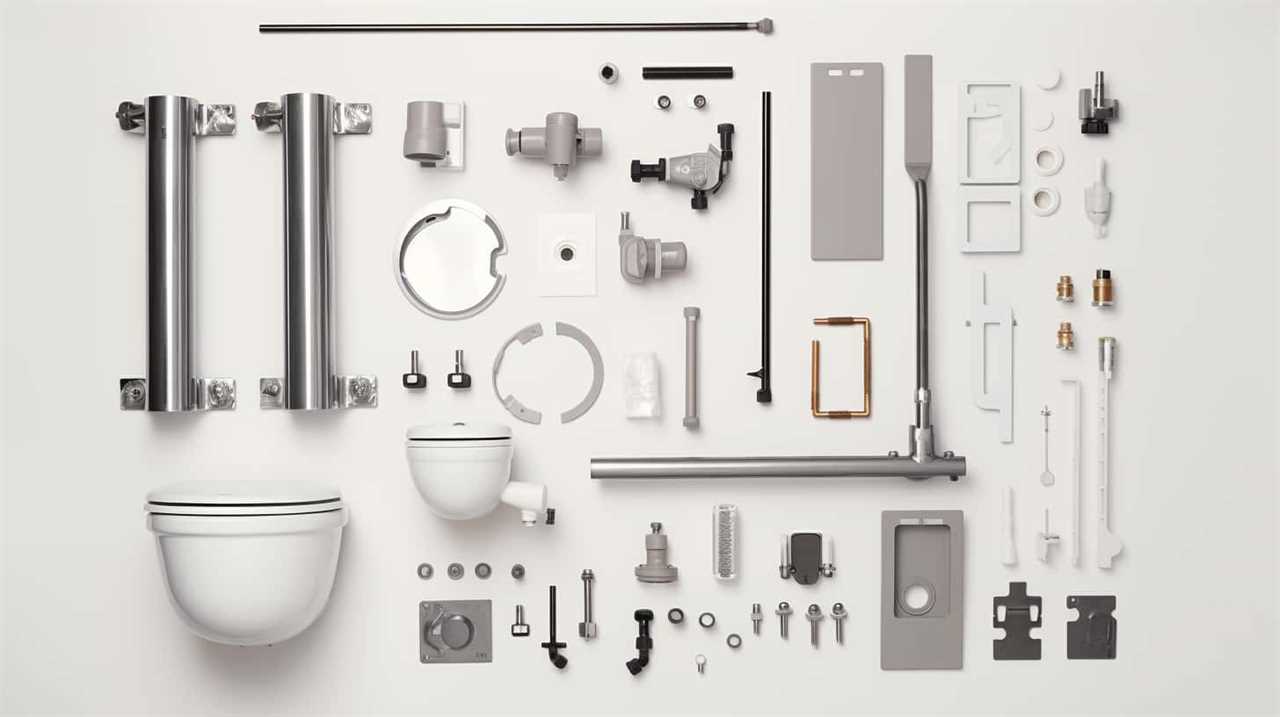
Call a Professional Plumber if Necessary
If we’re unable to successfully unclog the toilet using a plunger or toilet auger, we should consider calling a professional plumber. Knowing when to DIY and when to call a professional is crucial in avoiding further damage or costly repairs.
Here are three common causes of toilet clogs that may require the expertise of a plumber:
- Foreign objects: If an object, such as a toy or excessive toilet paper, has been flushed down the toilet and is causing a blockage, a professional plumber can safely remove it without causing any damage to the plumbing system.
- Sewer line issues: If the clog isn’t isolated to the toilet and affects multiple drains in the house, it could be a sign of a more serious problem with the sewer line. A professional plumber can assess, diagnose, and fix the issue efficiently.
- Persistent clogs: If you’ve tried multiple DIY methods and the clog keeps coming back, it’s time to call in a professional. They have the tools and knowledge to identify the root cause and provide a long-lasting solution.
Frequently Asked Questions
How Do I Shut off the Water Supply to My Toilet?
To shut off the water supply to our toilet, we need to locate the shut-off valve. Turning off the water flow at this valve will stop any water from entering the toilet bowl.
How Do I Determine the Severity of a Toilet Clog?
To determine the severity of a toilet clog, we must look for signs of a serious clog. These signs include water rising rapidly, gurgling sounds, and a complete lack of drainage.
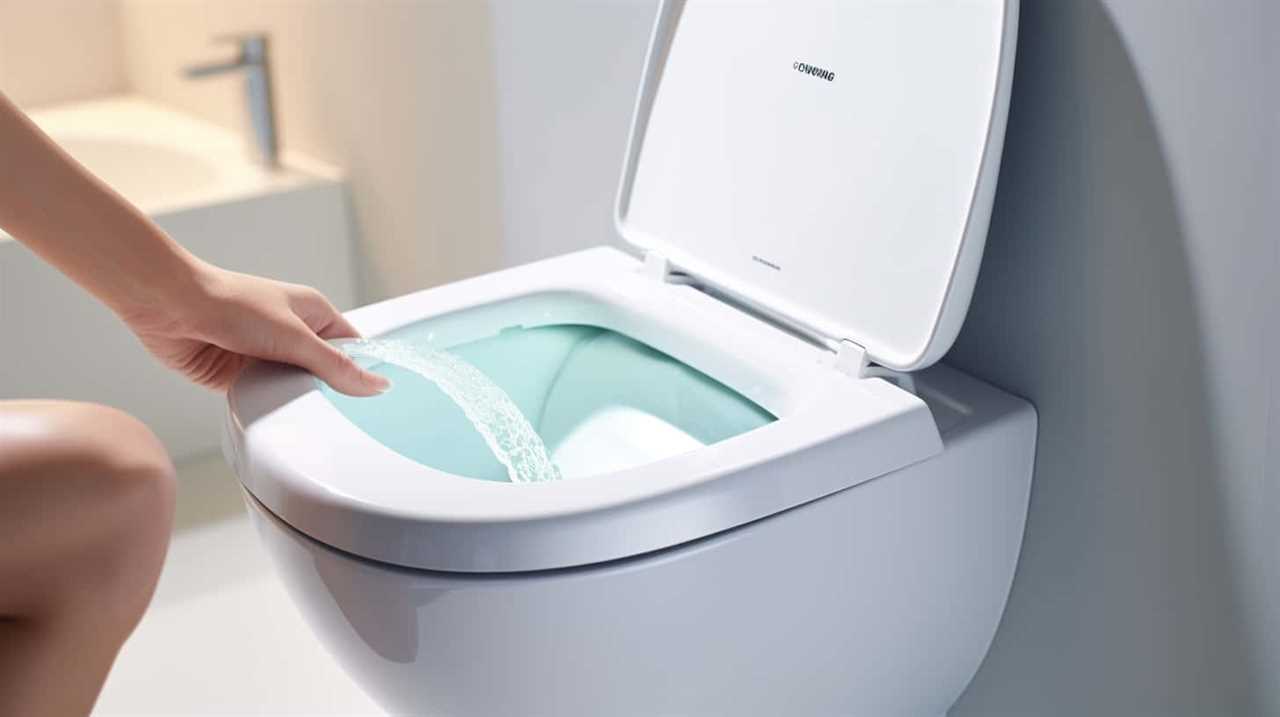
What Is the Correct Way to Use a Plunger on a Clogged Toilet?
Toilet plunger techniques are essential for unclogging a toilet. First, position the plunger over the drain and create a tight seal. Then, vigorously plunge up and down to dislodge the clog. If you don’t have a plunger, alternative methods can be used.
When Should I Consider Using a Toilet Auger or Snake?
When dealing with a stubborn clog that a plunger can’t handle, we might consider using a toilet auger or snake. These tools have the benefits of reaching deeper into the pipes and breaking up tougher clogs. In addition, practicing preventive measures like using less toilet paper and avoiding flushing non-flushable items can help prevent clogs in the first place.
What Signs Indicate That It’s Time to Call a Professional Plumber for a Clogged and Overflowing Toilet?
If your toilet is clogged and overflowing, there are signs that indicate it’s time to call a professional plumber. These signs include persistent clogs despite DIY methods and water damage around the toilet area.
Conclusion
In the unfortunate event of a clogged and overflowing toilet, fear not! By following these simple steps, you can conquer this messy situation like a toilet superhero.
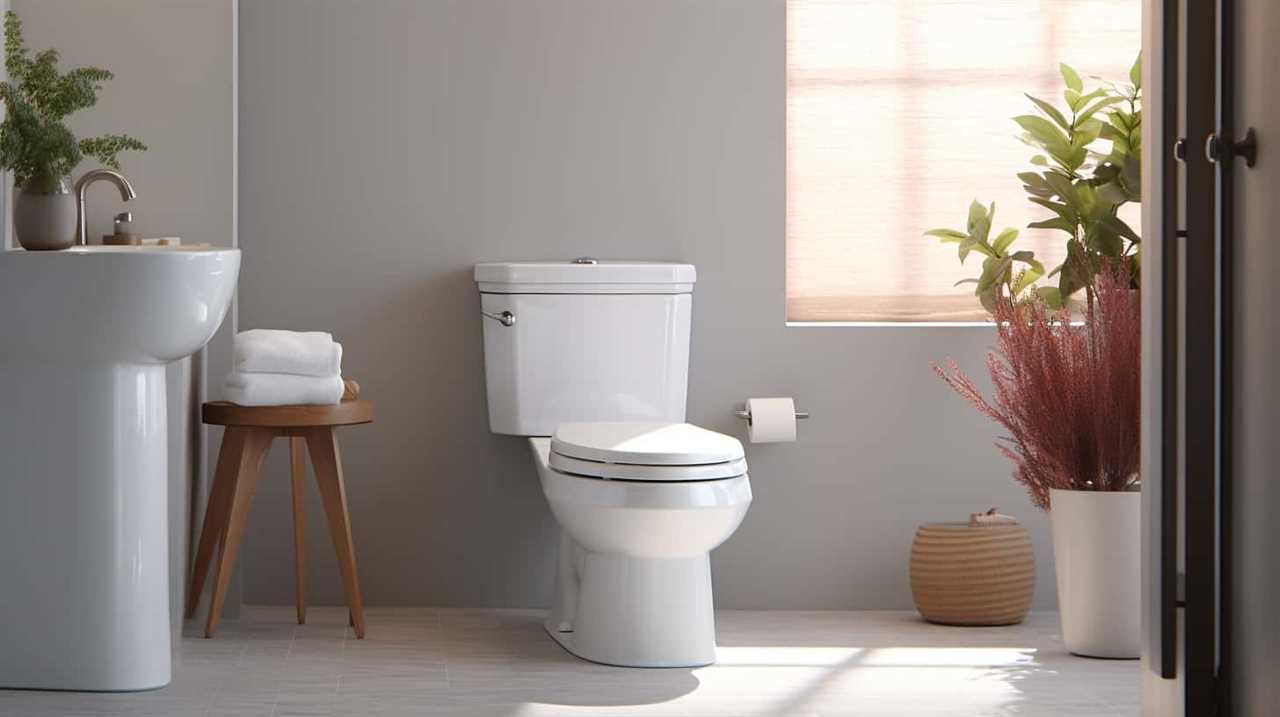
- Shut off the water supply.
- Assess the severity of the clog.
- Wield your plunger like a mighty weapon.
- If needed, unleash the power of a toilet auger or snake.
And remember, if all else fails, don’t hesitate to call in the expert plumbers, who’ll come to your rescue faster than a speeding toilet flush!
